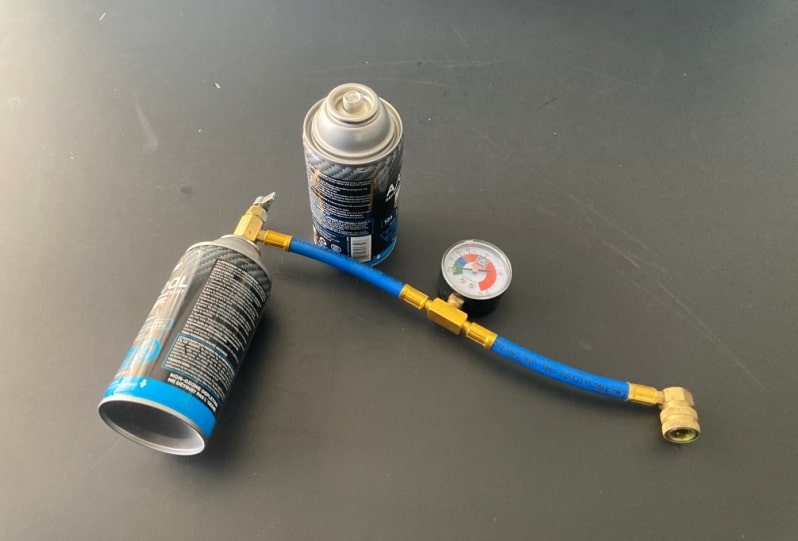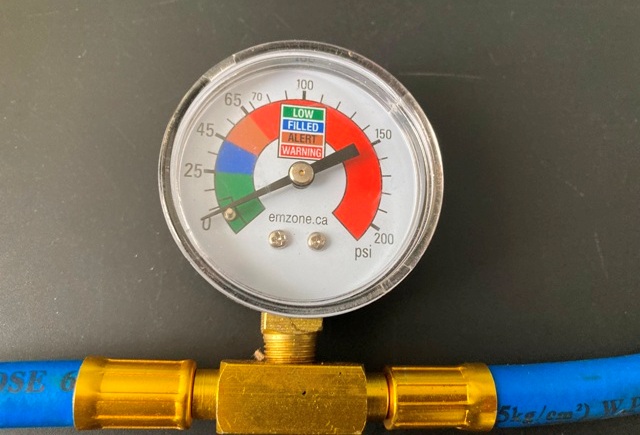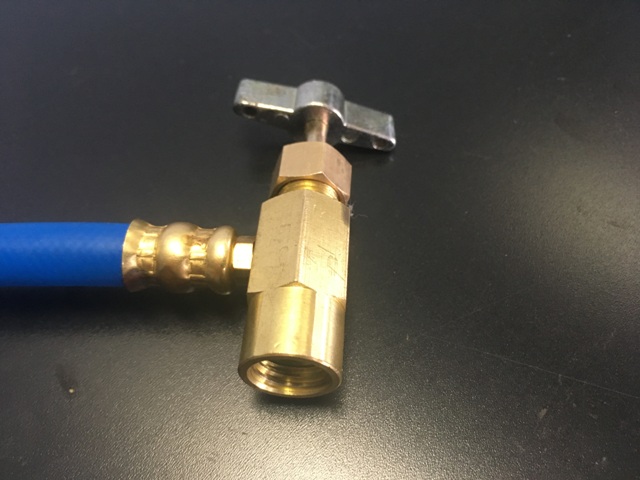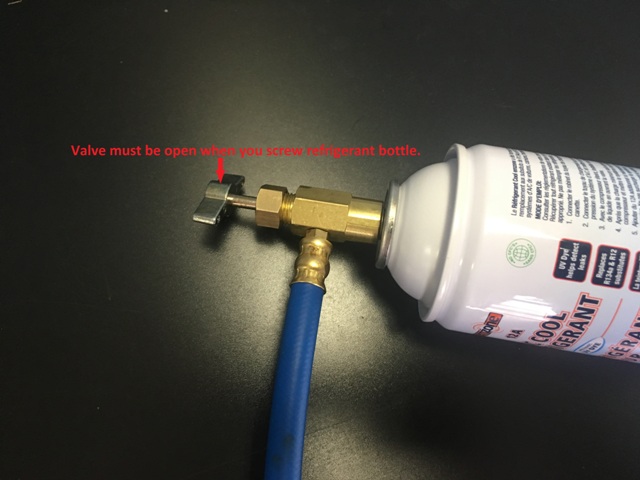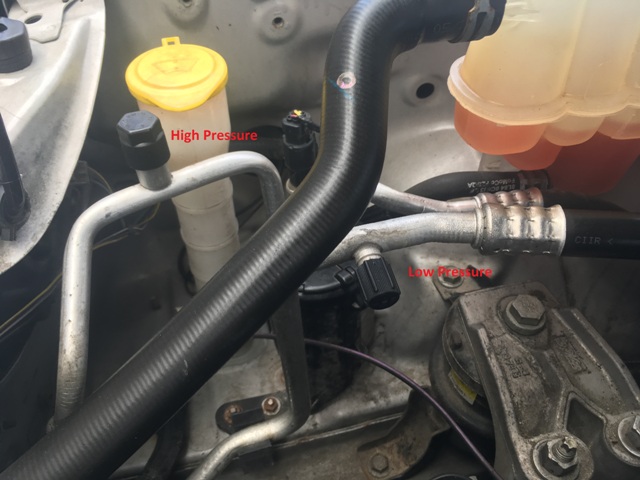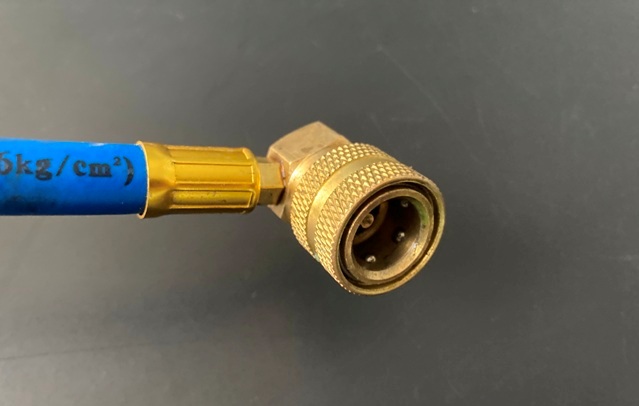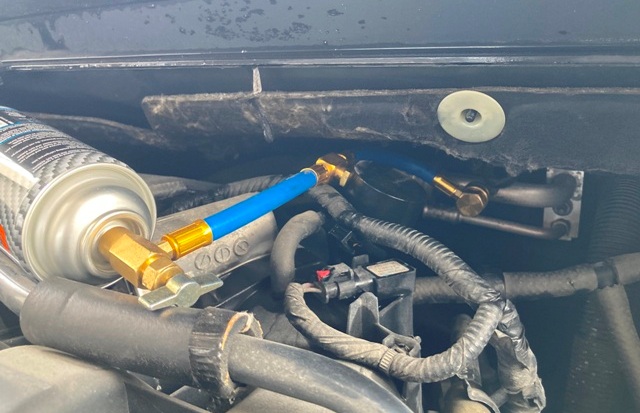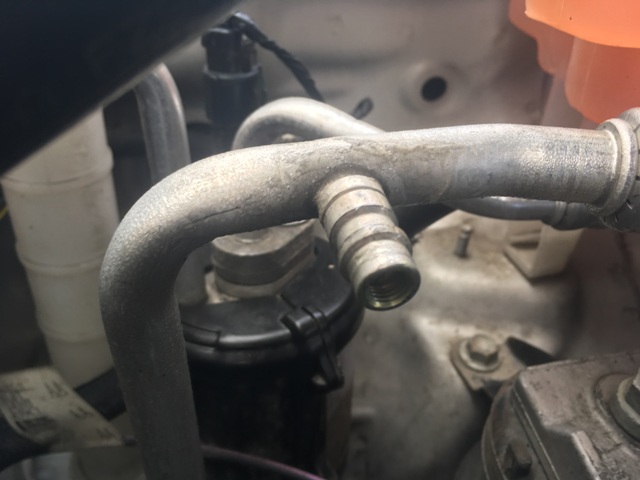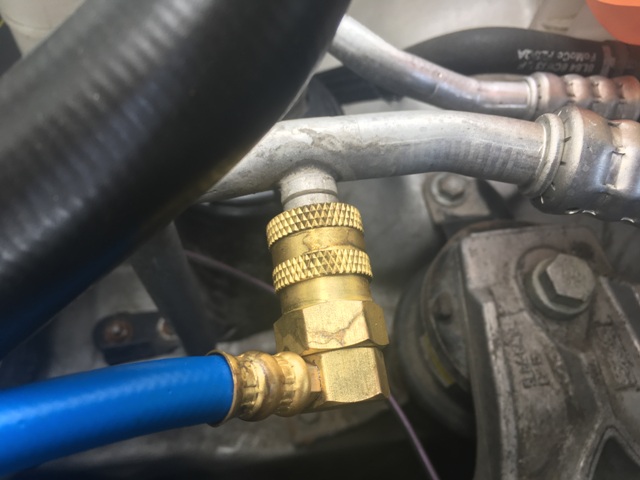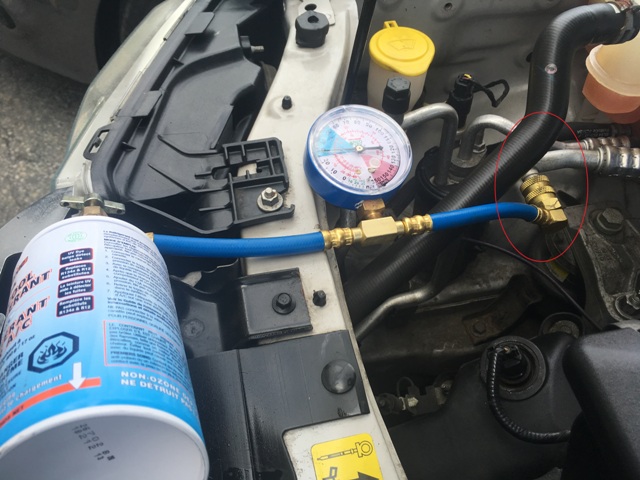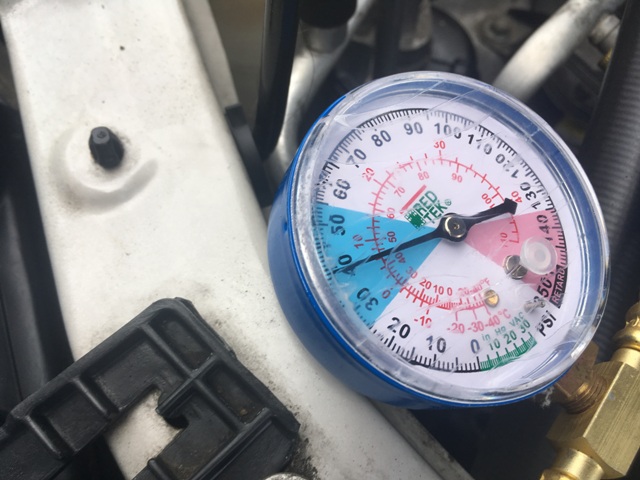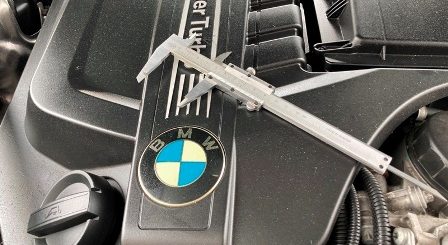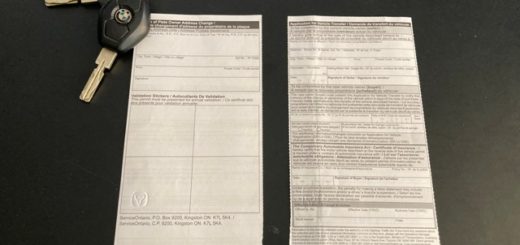How to Recharge Air Conditioning on Your Car
How to Recharge Air Conditioning on Your Used Car
We usually find out our air conditioning in our car is not working when summer moves in Canada (Ontario) and temperatures start to rise. finally after a brutal Canadian winter. A broken air conditioning usually comes out of nowhere as an unexpected expense at a bad time.
Anyways, there is never a good time for unexpected expenses. However, before rushing for expensive professional repairs you might want to try “cheating” first and recharge air conditioning on your car yourself.
Why Your Air Conditioning System Is Low on Refrigerant
If your A/C is blowing hot air or is not cold enough then air conditioning system in your used car is low on refrigerant level and needs a recharge. Air conditioning system leaks are common culprit of low refrigerant and caused usually by air conditioning condenser, lines or evaporator leaking. If you are lucky, leak is small and will take months or even years before it needs another recharge.
Refrigerant used presently for air conditioning recharge kits is R12a which replaced previous R12a and R134a. R12a has better cooling performance than predecessors.
Where to Buy and How Much A/C Recharge Kit Cost
Recharge air conditioning kits are sold at any automotive and auto parts stores in Ontario and Canada (Canadian tire, Parts Source, Walmart) and cost about $40 or thereabout..
A/C recharge kit includes two refrigerant bottles and a recharging line with pressure gauge. On image above, on the left is recharging hose valve where refrigerant bottle will installed. On the right is connector which will be used to connect recharging hose to low-pressure port in your car.
Bear in mind, there a lot of recharging kit designs, but in principle all work the same. Image below shows a different style pressure gauge than image above, but pressure readings are the same and easy to understand. Anywhere around 40 psi is good enough.
However, pressure gauges might be different and be confusing. Some gauges have have green lines, some other have blue and some both. Whatever the case, a fully charged system will be between 40 to 45 psi. Locate that number on your pressure gauge prior to recharging so you have a good idea how to measure it and when to stop charging.
Safety When Recharging Air Conditioning
When you recharge air conditioning in your car, you will be in close proximity to a running engine while working on pressurized system. Safety should come first:
- Air Conditioning refrigerant is poisonous if inhaled and will also irritate skin and eyes. Wear gloves and safety glasses when recharging air conditioning.
- Do not wear lose clothes, you will be working close to sniping engine pulleys and belts.
- Do not wear, or at least be careful with bracelets and necklaces. If a bracelet is caught by an engine moving part, big trouble will follow.
- Stay away from engine, do not burn yourself.
- On some cars, air conditioning recharge ports are very close to engine serpentine belt. Stay away from engine pulleys and belts, its very easy to lose a finger.
- Avoid contact with refrigerant. It is poisonous and will irritate your skin. Watch your eyes too.
- Make sure to identify and use Only Low Pressure Port to recharge air conditioning. Do not try to fit connector on High Pressure port.
- Before recharging air conditioning, read safety label on recharge bottle or on recharge kit manual (if it has one).
- Do not overcharge air conditioning system.
Details on How Air Conditioning Works by UTI institute.
How to Recharge Air Conditioning
Step 1: Prepare Air Conditioning Recharge Kit
Start by installing a refrigerant bottle on recharging hose. Open valve fully, its important for valve to be fully opened because it has a pin which makes a hole on refrigerant bottle. If you screw refrigerant bottle with valve closed, bottle might be punctured prematurely and you will have refrigerant leaking.
Open valve fully and slowly screw in refrigerant bottle all the way until the end. Make sure bottle is tight, dont try to kill it, just tight enough so it doesn’t leak. Once refrigerant bottle is installed, close valve all the way in. You will feel valve pin puncturing refrigerant bottle.
Open hood on your car and find recharging low pressure port. Air conditioning system has two ports, low pressure port and high pressure port. Example below shows Low and High pressure ports both located on passenger side and close to each other.
Step 2: Locate Air Conditioning Recharging Valves
When trying to locate recharging port in your car, bear in mind there are two ports similar to each other. Low pressure port and high pressure port. A/C recharging ports have protective plastic cover marked Low or High (L or H).
- You should use Only Low-Pressure port for recharging A/C system, do not try to fit recharging connector on high-pressure port.
High pressure port is bigger in size than low pressure port. Recharging connector will not fit on high pressure port and thats on purpose, so refrigerant bottle doesn’t explode in your hands.
Usually, both ports are located on passenger’s side of the vehicle under the hood. However, cars are different and there some models where low pressure port is located on driver side and/or close to windshield base. Images below, shows where low pressure port is located on different cars.
Use google to find it if you cant identify where low pressure port in your car is located.
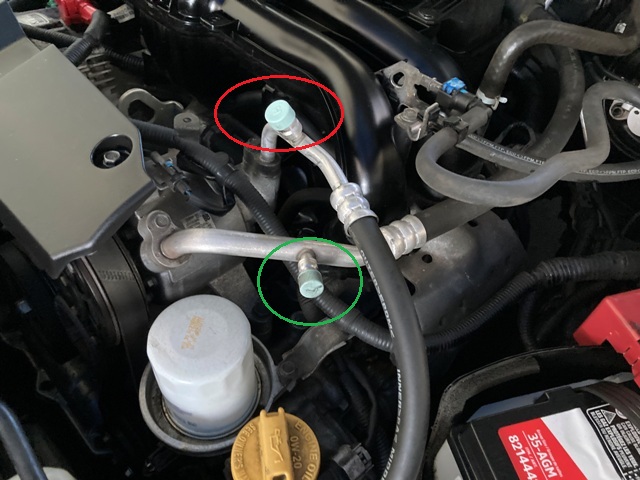
Image above shows low pressure port in green and high pressure port in red.
Step 3: Connect Recharging Valve on Recharging Port
Unscrew protective cap on low pressure port. Image below shows low pressure port with cover removed. If recharging port cover is seized use a pair of pliers to loosen and remove it. Some protective cover have a thin rubber seal which sometimes get stuck on recharging port when you remove recharging port cover.
Confirm recharging port is free of dirt any other obstructions before connecting recharging hose connector.
Attach recharge hose connector on low pressure recharging port by pressing it in, make sure it sits properly and tight or you will get leaks latter on when you start recharging (image below). A/C recharging hose connector is similar to air hose couplers or air hose fittings, same as sir tools. Connector has a safety lock, you need to pull on safety lock for installation and removal from car recharging port.
Step 4: Check A/C System Pressure Before Recharging
Before you start to recharge and with engine off, look at pressure gauge to check refrigerant pressure. If pressure gauge shows zero or no pressure then chances are you have a big leak somewhere.
Refrigerant will leak again soon after refilling or a week at most. In this case, recharging wont help much and A/C system needs to be repaired professionally.
If pressure gauge still shows some pressure left in the system, then recharging should work. For how long, that ultimately will depend on how big the leak is.
Sometimes, system is just low on pressure and refilling will fix it for a long time. If leak is very small it might take a year or more before it losses pressure again.
Make sure recharging line is not interfering with belts and pulleys. On some cars low port is very close to serpentine belt and pulleys. Watch your hands and fingers if that’s the case, its very easy to lose a finger or two when working close to spinning pulleys and belts. Also make sure you don’t have any lose clothes or other lose stuff, bracelets, necklaces, etc.
Recharging Air Conditioning
After connecting recharge hose connector to low pressure port, start your car and turn on your air conditioning on maximum setting, fan at full speed too.
- Open recharging valve, turn bottle upside down and shake it. Listen for A/C compressor to engage, when refrigerant pressure goes up your air conditioning compressor will start working.
Step 5: Check Air Conditioning System Pressure When Recharging
- Check pressure when A/C is on, compressor is engaged and valve on recharge kit is closed. Fully charged system pressure should be around 40 psi when compressor is engaged and working.
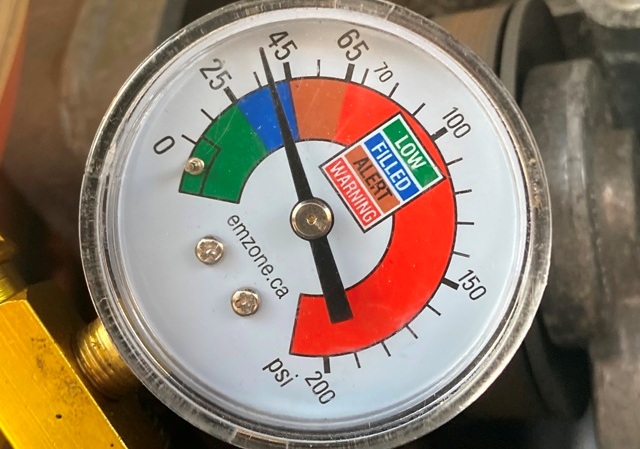
- Close recharge kit valve and look at pressure. If it stays at 40 psi then system is fully charged and you should stop recharging. Do not check pressure with recharge valve open or when compressor is not working, you will get false reading.
Depending on how big or how drained your air conditioning system is, it might take more than one bottle to fully recharge it. If thats the case, close valve and disconnect connector from low-pressure charging port.
Unscrew empty bottle, screw in another one and close valve. Install connector to low pressure port, open valve and keep recharging again until your air conditioning system is fully charged.
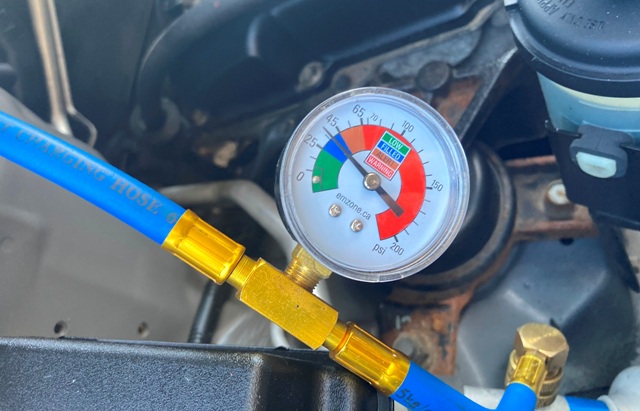
- Pressure when system is full should be around 40 psi when compressor is engaged and working. If compressor is not working, refrigerant pressure will show much higher (90 psi or so) and should not be taken in consideration.
- Stop recharging when 40 psi pressure is achieved. Close valve and detach low-pressure charging port connector. Hopefully, you have a slow leak and can get away with doing this only once a year. Otherwise, air conditioning system needs to be properly diagnosed for leaks and repaired.
Step 6: Do not overcharge Air Conditioning system
More is not better. A/C system has a pressure sensor which will deactivate air conditioning compressor. Air conditioning will not work if pressure is higher than normal. Pressure should be dropped to normal levels for air conditioning compressor to start working again.
Releasing air conditioning gas in atmosphere is illegal in most jurisdictions around the world.
Do not try to vent air conditioning system yourself using low pressure port valve with engine off. System is under pressure even with engine off and will spray all over the place when low pressure valve is pressed with a screwdriver.
Refrigerant is poisonous if inhaled and harmful to environment and should not be vented into atmosphere. It should be collected and vacuumed by a professional repair shop.
(If you are also looking for a fast and easy solution to sell your car, more here on “How To Sell Your Car Fast” )
Comments: If you have any questions or suggestions related to this post or Used Car Toronto in general, don’t hesitate to use comment section below.


